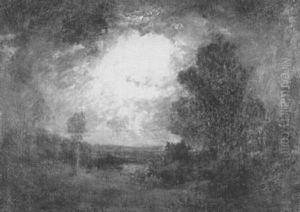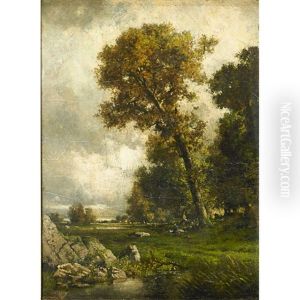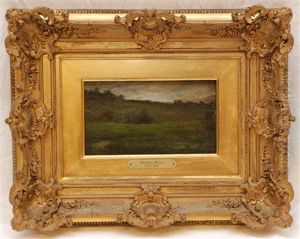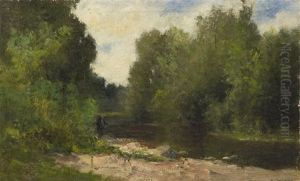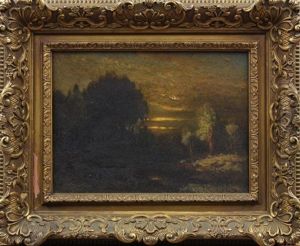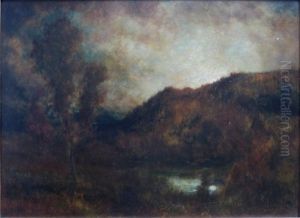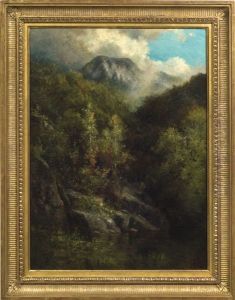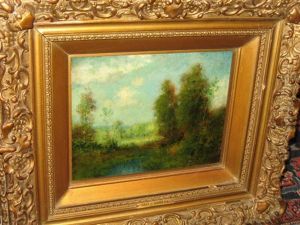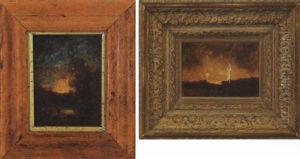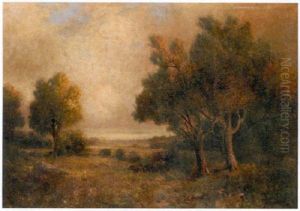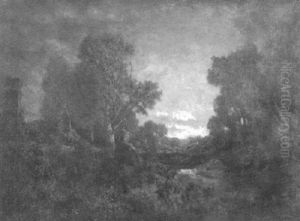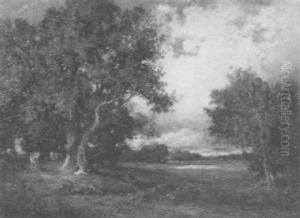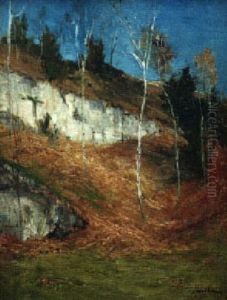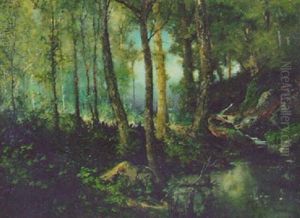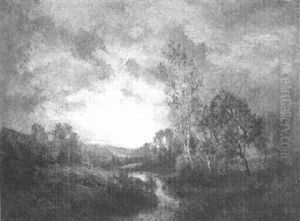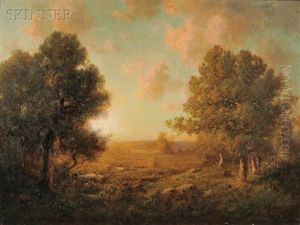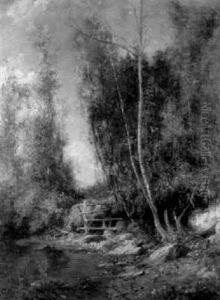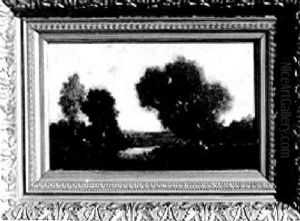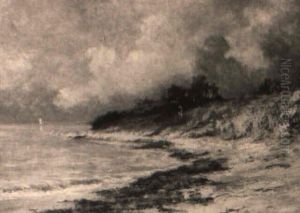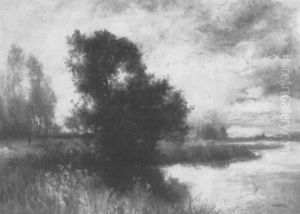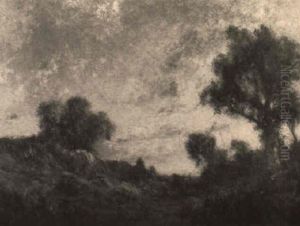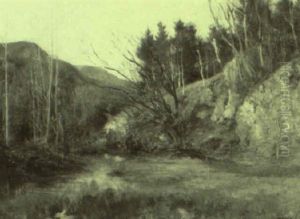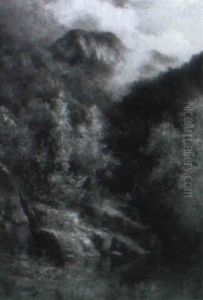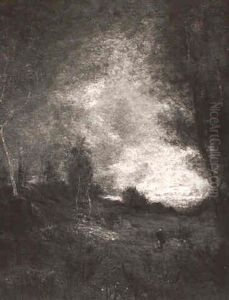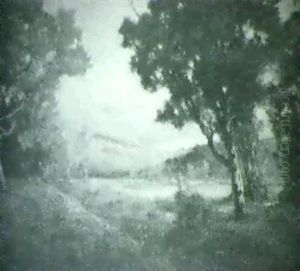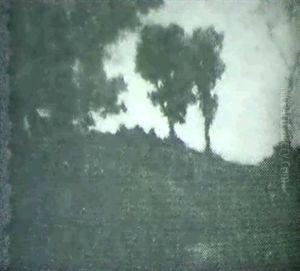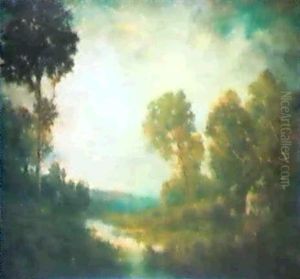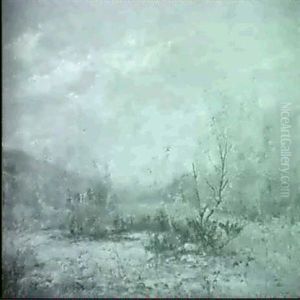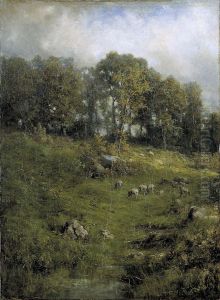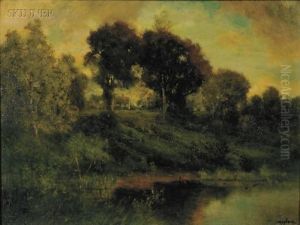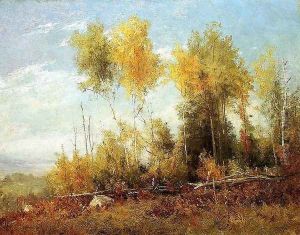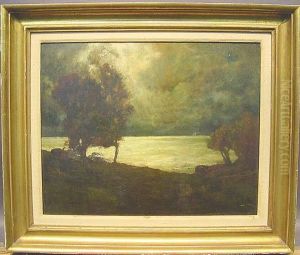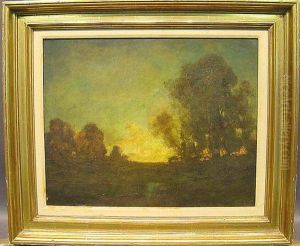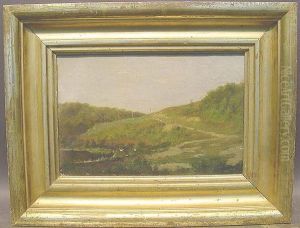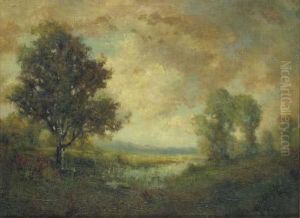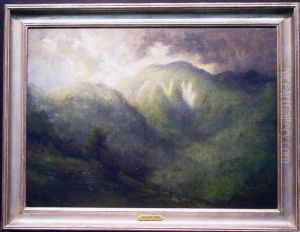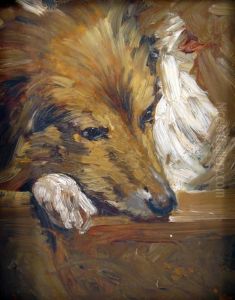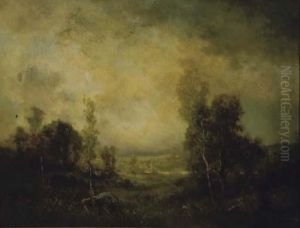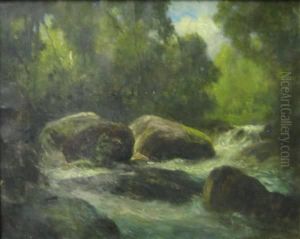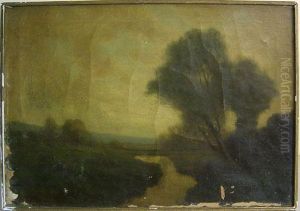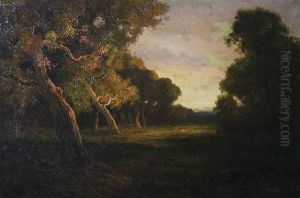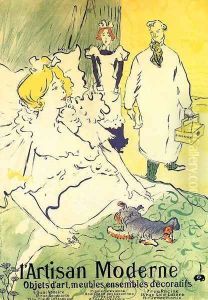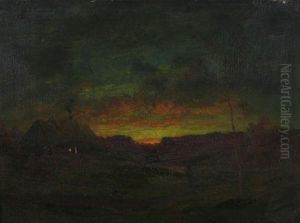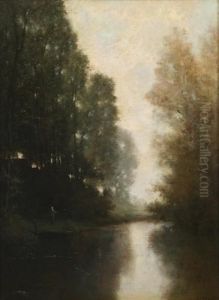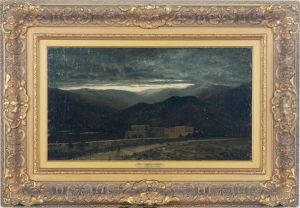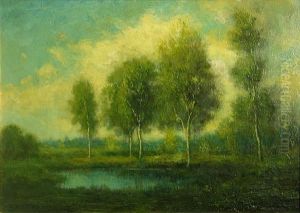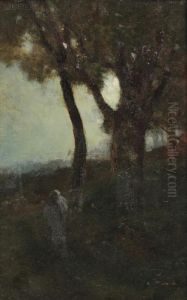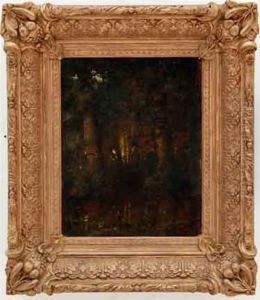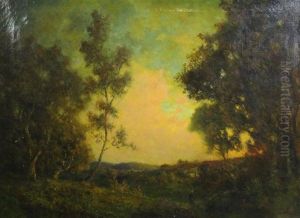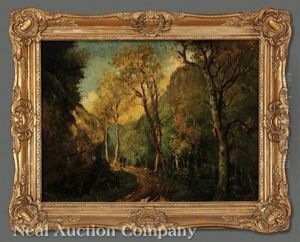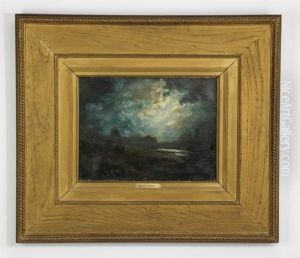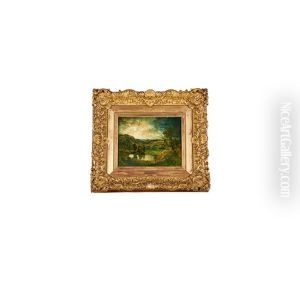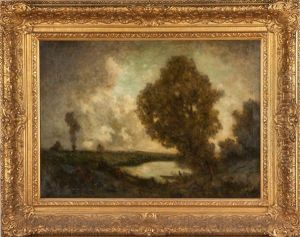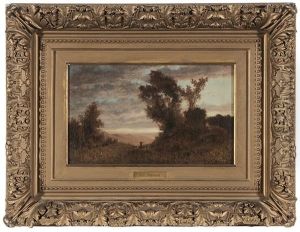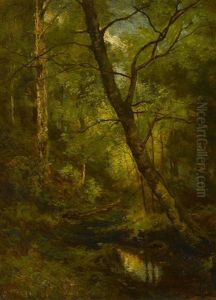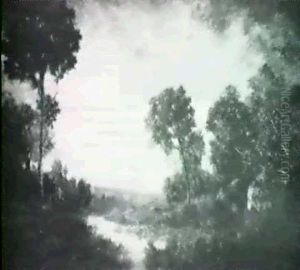Robert Crannell Minor Sr. Paintings
Robert Crannell Minor Sr. was an American artist born on April 30, 1839, in New York City. He emerged as a significant landscape painter, associated with the American Tonalism movement, which was characterized by soft focus, a muted palette, and a quiet, often melancholic, atmosphere in painting. Minor's works are known for their poetic rendering of the American countryside, imbued with a sense of serene contemplation.
Minor initially pursued a career in business but was drawn to the arts. In his early thirties, he decided to focus on painting and went to Europe to develop his skills. He studied in France at the École des Beaux-Arts and under the tutelage of some of the prominent artists of the time, including Émile Lambinet and Charles-François Daubigny. These experiences were crucial in shaping his stylistic approach, which often reflected the Barbizon school's influence, known for its realistic and naturalistic landscapes.
After returning to the United States in the 1870s, Minor settled in the Hudson River Valley, an area that provided ample inspiration for his work. He became an integral part of the American art scene, exhibiting his work at various institutions, including the National Academy of Design, where he was elected an Associate in 1888 and a full Academician in 1897. His work was also featured at the Paris Salon and the World's Columbian Exposition in Chicago in 1893.
Minor's landscapes were celebrated for their evocative use of light and color, often depicting the quietude of dawn or dusk. He rarely included figures in his compositions, instead focusing on the interplay of light, shade, and the natural elements. His later works became more ethereal and atmospheric, reflecting his deepening interest in Tonalism.
Robert Crannell Minor Sr. passed away on August 4, 1904, in Waterford, Connecticut. His passing was mourned by the art community, and his works continue to be exhibited and appreciated for their tranquil beauty and contribution to the American landscape painting tradition.
